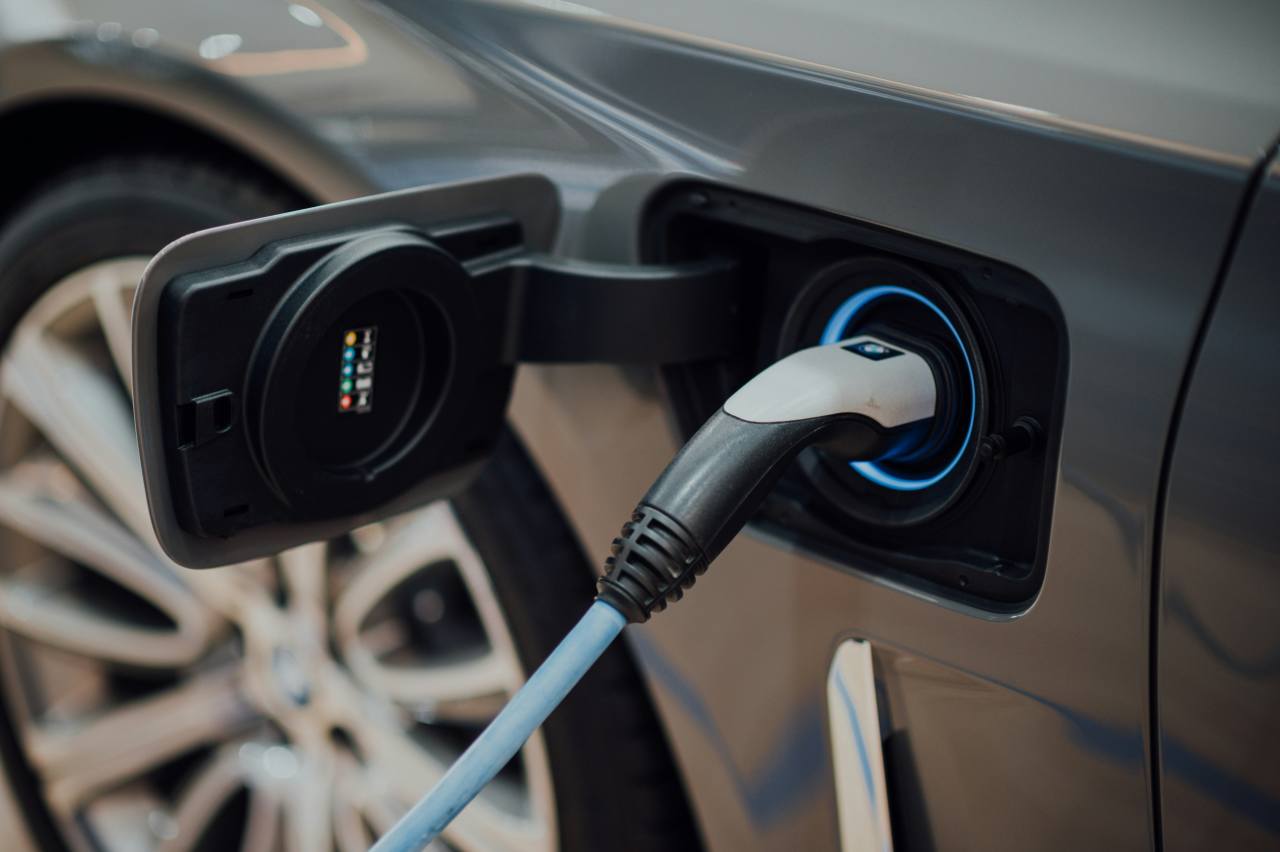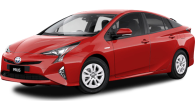I’ve been waiting for the opportunity to live with an electric car for quite some time.
While I’ve tested almost every model on the market, it’s one thing to tell people an EV should have enough range and charging convenience to live with when you only have a car for a week, and quite another to actually live with one and experience it for yourself.
I’ve been on a hybrid roll lately, with my last two long termers being a Toyota Corolla and Subaru XV, but I’m handed the keys to this Nissan Leaf e+ as my first opportunity to actually live with the next step - a fully electric car.
Also timely given my role has expanded to include managing EVGuide.
Will it have enough range for my needs? Will charging be as convenient as I have experienced on my weekly tests? Or will I have to eat my words when it comes to the future of cars in Australia? Let’s find out.
Nissan Leaf 2022: E+
| Engine Type | 0.0L |
|---|---|
| Fuel Type | Electric |
| Fuel Efficiency | 0.0L/100km (combined) |
| Seating | 5 |
| Price From | $42,020 - $49,390 |
| Safety Rating |
|
Part 1: July
Let’s talk about this specific car quickly. This is the latest version of the Nissan Leaf, the e+. Slotting into the range above the base-model Leaf, the main upgrade in the e+ is a much larger battery pack allowing for a significant increase in range between charges.
The base Leaf only offers 270km of range, less than I would normally consider enough for Australian commuters, and for the record this is the car I originally wanted to long-term test to really see if that miniscule range would, in reality, be okay.
.jpg)
My colleagues in Melbourne beat me to it, so go read their 2020 long-term base model Leaf test here.
If you thought the roughly $50K asking price for the base Leaf was a tall order, though, this new version with its claimed 385km driving range ups that by more than $10K, with a total before-on-road asking price of a painful $60,490.
If we’re on the topic of hatchbacks generally, that’s seriously fast hot hatch money, but in its EV niche the Leaf e+ competes with rivals like the Hyundai Kona electric (484km range - $62,000), Kia Niro EV S (451km range - $67,490), Tesla Model 3 Standard Range Plus (420km range - $59,900), and the frankly bizarre Mazda MX-30 (224km range - $65,490).
It’s not a great start for our little Nissan hatch. While it’s the only hatchback in this company, the Kona and Model 3 in particular offer stellar range and superior cabin tech at this price point.
In an attempt to sweeten the deal a little, the e+ also has a more powerful motor, producing 160kW/340Nm allowing for a somewhat impressive 0-100km/h sprint time of 6.9 seconds, and also has improvements on the charging front to go with its larger battery. More on that later.
To set the scene for this test you should know a few things about how I intend to use the car. Firstly, I live in a unit complex built some time in the ‘70s or ‘80s, so I have a single car space with no power outlets nearby, leaving me with no way of charging it at home.
.jpg)
I was hoping to bring you a few inter-city drives as the range in this car allows, but it looks like it will be a while before we’ll be able to do that.
Still, it’s been convenient to hop into a long termer as my ‘daily’ as our usual stream of test vehicles has ground more-or-less to a halt.
So, despite a lower than usual distance travelled, I feel as though I’ve been able to get to know the Leaf quite well.
In my commutes I’ve found this car to be particularly quiet and comfortable, and its certainly the right size for me and my partner.
The seats deserve a special mention. While you don’t sit as low in them as I would like for a hatch (to facilitate the underfloor battery storage) they’re trimmed in a nice thick synthetic leather material and padded generously enough that you simply sink into them.
.jpg)
The trim continues to the doors and armrest console to make the Leaf a cozy place to sit in.
I also appreciated the heated seats for the winter months, and keyless entry combined with large door apertures makes the cabin easy to access even in tighter parking spots.
My initial impression of the cabin reveals some downsides though. There’s not really enough storage. You get two large cupholders, a small armrest console, some pockets in the doors, and that’s it.
There’s an odd little phone-shaped cubby under the climate controls, but it’s only good for a single phone, and it seems like a missed opportunity to not put a wireless charger there.
So, while the cabin is comfy, it’s missing some of those EV benefits rivals take advantage of like extruded storage space under the centre stack where combustion drive components would usually be.
.jpg)
Driving is also an easy experience. I’ll talk more about this in later instalments, but I do like the Leaf's no-nonsense feel behind the wheel, with a single regen braking ‘e-Pedal’ mode making it efficient and smooth for short-distance commutes.
It’s lacking in some areas to do with feedback, and the interactivity of the cabin does feel a bit old-school and dare I say, budget-focused, compared to rivals.
I bet the burning question you have is how do I charge it. With no way of topping up at home, surely, I’m going to have problems, right?
In reality though, this is a very good story. When I first tested a pre-launch Leaf in 2019, I struggled to find places to charge it.
The amount of infrastructure which has rolled out in the three years since then is staggering. In my locale of Northern Sydney, many council parking areas have at least some form of charging station, with my closest one having four spaces with solar-charged 7.4kW AC units.
Solar charged means free, apparently, so I can comfortably drive my Leaf all week, park it up at this local charger and restore roughly 135km of range in my three-hour free parking time with a running cost of precisely zero dollars.
.jpg)
In reality I charge up while I do a grocery shop once or twice a week, restoring between 50 and 70km each time, breaking roughly even on range.
Getting lazy in the second half of the month though, meant I let the charge drop to 20 per cent, at which point I commuted to the nearest 50kW DC charger (which, at the time was within my legally allowed lockdown radius) and was able to restore the Leaf to 80 per cent in about 60 minutes, enough time to grab some local pastries and go for a walk.
In total, my charging cost for the month was $12.30 from that single high-speed session. Can’t say it would have been the same for a combustion vehicle...
In terms of efficiency for my first month, I scored 16.4kWh/100km which is better than the official/combined claim of 18.0. Makes sense as I've been kicking around town only, in mainly 'Eco' drive mode with the regenerative braking 'e-Pedal' on.
Acquired: July 2021
Distance travelled this month: 423km
Odometer: 701km
Average energy consumption for July: 16.4kWh/100km
Part 2: August
My second month with the Leaf has been during the height of Sydney’s lockdown, and as such I’ve found it tough to rack up kilometres, despite finding as many excuses as I can to drive the Leaf to the more picturesque walking tracks within my allotted walking radius.
All those efforts added up to just 230km added to my total.
It’s not a lot, but I still have plenty of observations to add about our humble Nissan EV. One thing I noticed particularly is how invisible the Leaf is.
Despite being a new-ish EV, the Leaf is certainly not a head-turner. I’m pretty sure people see this little EV and just see any old Nissan hatch. Good if you’re not into drawing attention to yourself, like you might in a Tesla or other more premium-looking or feeling electric model.
.jpg)
It’s perhaps a little too anonymous and silent though, with the only noise emitted a high-pitched turbine-spooling noise under acceleration. I found it a little tricky to alert pedestrians of my presence in parking lots and down shared alleyways in my locale.
Another thing I wish it had was a bit more interactivity. It has some neat features on the dash, it’s just annoying the car has to be fully on to see them.
For example, when you’re plugged in to charge up, many rivals will display the state of charge, current charge speed, and time remaining to full on the multimedia screen or digital dash when you simply unlock, or even just walk near the car in the case of a Tesla.
To see this in the Leaf while it’s plugged in, you need to unlock the car, sit in it, turn it fully on, then flick the digital dash through to the charging screen. Hardly intuitive, especially at public charging locations which don’t offer any kind of charging information on the outlet itself.
On the topic of driving the Leaf and it’s oh-so-smooth. I enjoy that it brings itself to a halt with the e-pedal regenerative braking, and I’ve become used to the distance I need to let go of the accelerator at different speeds to stop just on the line of the next junction. It’s an unexpected new electric-car habit you’ll eventually adjust to.
The Leaf’s silence and docile nature also do a good job of masking how rapid it is. With no accompanying noise, it’s especially easy to tilt over the speed limit in this little hatch as it surges forward with no pomp or circumstance. While it’s not as much of an athlete as the Tesla Model 3, the e+ can make use of a boatload of torque, making it more of a sleeper than others in traffic, or even you, the driver, might expect.
That being said, it doesn’t have the handling prowess to match its impressive outputs. Tilting it into a corner makes you very aware of the extra weight this EV carries, and the steering, while easy and compliant, is a little doughy to be engaging in the corners.
_1.jpg)
In the last month I let the Leaf run down to about 50 per cent charge, topping it up occasionally at my local free charger, continuing its near zero running cost. To start my next month in the car, I topped it up from 50 – 80 per cent at my nearest 50kW capable charger, which took about 20 minutes and cost a total of $7.23. This brings my total running cost over a distance of 653km at just $19.53. It’s convenient that most fast charge units in Sydney are built by Tritium, which have both the popular Type 2 CCS DC connector, and the one Japanese-standard CHAdeMO connector used by the Leaf.
Total consumption over this period remained relatively stable at 16.3kWh/100km, despite my attempts to be as economical as possible on my short journeys. It remains less than the combined claim, but still short of the lowest consumption numbers I’ve seen in the comparable fully electric versions of the Hyundai Ioniq and Hyundai Kona.
Stay tuned for our next update, where we’ll again touch on practicality, as well as some further impressions.
Acquired: July 2021
Distance travelled this month: 230km
Odometer: 931km
Average energy consumption for August: 16.3kWh/100km
Part 3: September/October
We’ll roll my last two months with the Leaf e+ together, because a combination of Covid-19 induced lockdowns and weekly car loans starting back up meant the Leaf received a little less love than I would have liked, especially during September.
This means for much of the interim time, the Leaf was relegated to shopping and exercise duties, continuing to reside in its suburban comfort zone. It also meant I could continue to charge it up for free at my local solar-powered AC outlet.
Thankfully, in my last week with the car, I was able to take it for the kind of range test I had originally envisioned. This meant travelling some 280km from my home in Sydney’s north, to beachy Seal Rocks on the NSW Mid North Coast.
.jpg)
This should be no issue, as at 100 per cent charge the Leaf is theoretically capable of 385km. We discovered two things on our trip, though. An EV rarely spends much time near 100 per cent charge, and a bit of extra infrastructure up and down the coast would be very welcome.
To get the Leaf to the level of charge we needed I took it to my nearest 50kW DC charger, which juiced it up to 94 per cent, showing a 375km range on the dash. Should be plenty to work with.
From there, I did a grocery shop, plugging it in at my local free AC spot, topping the charge to 98 per cent, before returning home.
.jpg)
The next morning, we loaded the Leaf up. Size-wise, the boot is only okay. It will fit the three-piece CarsGuide luggage set with a little creative thinking, but the issue is a big Bose sound unit jutting out of the floor. It takes up a fair bit of space and as it’s clad in hard plastic, it’s tough to avoid scratching the surface when loading up. Annoying.
Regardless, it offers more than enough room for a long weekend’s worth of luggage, swimming gear, camera gear, and vehicle charging paraphernalia. Keep in mind, too, there’s no frunk to offload things like charging cables.
We head off, and things are initially looking quite good. The way north out of Sydney provides a fair bit of regen braking action to maintain the range, and the flat, or downhill initial part of the freeway is pretty good for consumption, too.
.jpg)
Things changed quickly, though, as varied topography started to seriously eat away at the charge levels. This car doesn’t like the open road, and it really doesn’t like hills, with the consumption graph spiking alarmingly, almost aligning with a cross-section of the terrain we were covering.
With plenty of wiggle-room, though, we made it to a recently installed fast-charger in the riverside town of Karuah. A strategic spot for a charger, allowing Sydney EV drivers headed further north to bypass the city of Newcastle. It would grant us the charge we needed for the rest of the journey, and I hoped, some range to play with at the destination.
Two observations about this station, though. Operated by Chargefox, it offers up to 350kW of fast charging, but only for European-standard Type 2 CCS plugs. The Leaf uses the CHAdeMO standard, for which there was just the one station, capable of 50kW.
.jpg)
This not only left us short of the 100kW capability of the e+ variant, but the 50kW unit also had a Euro port, which could potentially leave you last in the queue to any other EV just because of your charging port.
We charged up, walked around the town, and in 37 minutes we were back on the road with 78 per cent charge and 285km range. Plenty, right?
Not quite. The changing topography of the road drained more charge than I would have liked, and by the time we’d checked into our accommodation and visited the beach, the range was looking alarmingly low once again.
.jpg)
For our second day, we drove around only a little, making sure to leave enough range to return to the Karuah charger, as there’s obviously no infrastructure in such a remote part of the coast (there’s barely any phone reception… ). That was until a friend pointed out a power outlet in our rental property, which changed things significantly.
It allowed me to trickle-charge it up to just over 60 per cent overnight, giving me some extra range for travelling around the local area.
The return journey was more of a worry though. We charged up to around 80 per cent at the Karuah unit on our way through, but the margin by the time we got home was slimmer than I had expected. By the time we were navigating the final return climb into Sydney, I was legitimately concerned the range remaining would drop under the trip distance left.
.jpg)
This is because for a large part of the freeway journey, the Leaf hovered around 21+ kWh/100km. This car hates the freeway so much, that by the time we got back into stop/start traffic, the range decline stopped completely for a full 20 minutes as it re-adjusted to the fact that it was getting energy back sometimes rather than constantly losing it.
We made it back to the fast charger near home with a dash-reported 32km to spare. A bit too close for comfort. Next time I’d be charging beyond 80 per cent for the return journey.
It's worth keeping in mind this trip wouldn’t have been possible just two years ago (when I reviewed the short-range version of this car) which is a reminder of the rapid spread of non-Tesla charging infrastructure.
Now with 550km of freeway miles under its belt, the Leaf’s average consumption shifted from 16.3kWh/100km, up to 16.8kWh/100km. After racking up more DC charge sessions across the ChargeFox (decently priced) and Evie (a tad expensive) networks in my last month with the car, total cost of charging across five months and 1372km came to an astounding $59.06. An appealing figure when compared to the cost of fuel at the time of writing.
.jpg)
Acquired: July 2021
Distance travelled overall: 1372km
Odometer: 2303km
Average total energy consumption: 16.8kWh/100km
Total charging cost (5 months, 1372km): $59.06
Verdict
I’ve been charmed by the easy-to-use Nissan Leaf e+ in my months with it. It’s easy-going, comfortable, and has plenty of range to work with for city drivers, so charging doesn’t become much of an inconvenience.
It’s also nice to know that if you do want to venture beyond city limits, it’s entirely possible as long as you plan your trip carefully. Keep in mind you’ll need to double any distance calculation that involves straying from the nearest fast charger.
While I liked the Leaf e+ as a daily driver, its biggest issue is price. With a now cheaper and longer-range Tesla Model 3, as well as more competitively priced incoming rivals like the Polestar 2, it’s easy to see why I rarely ran into another Leaf at charging sites.
That’s not to say it won’t appeal to buyers looking for something more subtle and familiar. But with the new players on the market it’s not the 'affordable' EV it used to be.
Range and Specs
| Vehicle | Specs | Price* |
|---|---|---|
| Base | Electric, 1 SPEED AUTOMATIC | $32,560 - $38,720 |
| E+ | Electric, 1 SPEED AUTOMATIC | $42,020 - $49,390 |




.jpg)
.jpg)
.jpg)
.jpg)
.jpg)
.jpg)
.jpg)
.jpg)





















.jpg)

.jpeg)


.jpg)
.jpg)




.jpg)
Comments